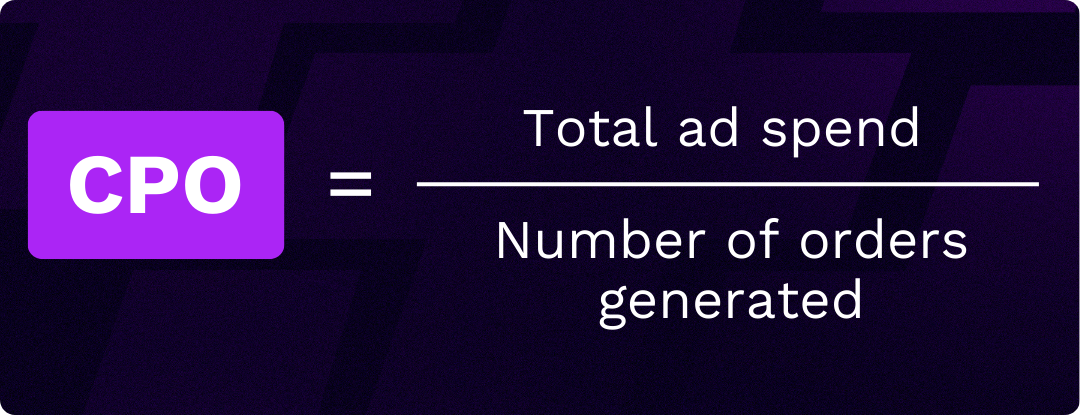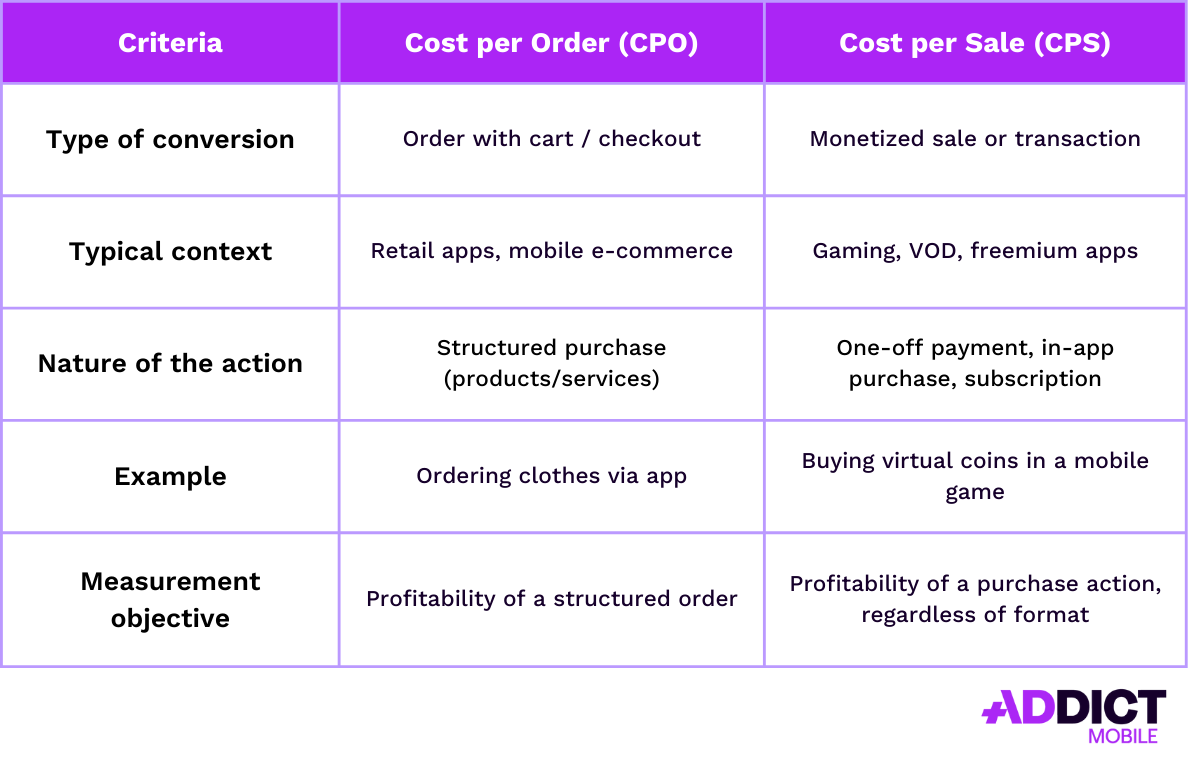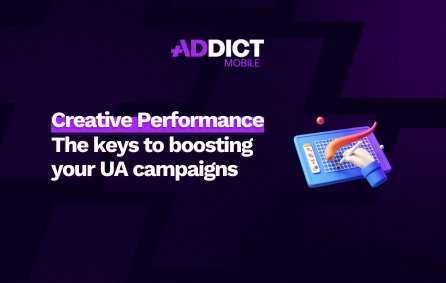Mastering Cost Per Order (CPO) to Optimize the Profitability of Your UA Campaigns
Introduction
In a context where every euro invested in marketing must deliver measurable results, CPO (Cost Per Order) stands out as a key performance indicator. Rather than tracking intention or intermediate actions, it focuses on the actual cost of generating a completed order.
What is CPO?
Cost Per Order refers to the average amount you need to spend on advertising to generate a confirmed order. It measures a transactional conversion, rooted in an actual purchase.
It’s important to note that in some approaches, CPO is defined more broadly, including not only advertising costs but also logistics fees, discounts, analytics tools, and more. In this glossary, we focus on a definition of CPO as the marketing (advertising) cost required to generate an order.
Unlike other indicators such as CPL (Cost Per Lead) or CPI (Cost Per Install), CPO is positioned at the end of the conversion funnel, where business value is actually captured.
It’s a key KPI for retail and e-commerce apps, for example.
How to calculate CPO?
The formula is simple:
Cost per order = Total Ad spend / Number of orders generated

Examples
- A $12,000 campaign generating 400 orders → CPO = $30
- A more targeted $8,000 campaign generating 320 orders → CPO = $25
Cost per Order can be analyzed:
- by channel (Meta, Google Ads, TikTok…),
- by visual or creative format,
- by audience segment, country, or OS,
- or by offer type (entry product, promotion, new release…).
The goal is to identify the combinations that offer the best cost/order ratio.
What is the average CPO?
There is no universal benchmark for cost per order, as this KPI strongly depends on the campaign context and the economic value of the order. Variations can be significant depending on several factors:
- the business sector (retail, food delivery, services, etc.),
- customer value or LTV (Customer Lifetime Value),
- geographic area (mature markets vs. emerging ones),
- business model (one-shot, high average basket, purchase frequency),
- or the type of conversion targeted (first order, reactivation, upsell…).
Other elements like competition, product maturity, or seasonality (Black Friday, Christmas, sales…) also impact performance.
Check out our winning strategies for high-performing Black Friday campaigns.
Key takeaway: the goal isn’t to get the lowest CPO possible, but a CPO that’s profitable relative to the value generated. A $35 CPO can be excellent if each order brings in $120. Conversely, a €10 CPO is not satisfying if the margin is close to zero.
Why is CPO a strategic KPI in mobile acquisition?
Cost per order offers a direct view of campaign business performance by linking every dollar spent to an actual order.
Here’s what makes it a strategic lever:
Alignment with actual profitability
Unlike intermediate KPIs like CPC or CPI, CPO focuses exclusively on final results. It doesn’t measure traffic or engagement, but what truly generates revenue: orders.
Targeted budget allocation
By analyzing cost per order by campaign, channel, audience, or creative, teams can precisely identify what really works and allocate budgets where orders cost the least.
Full-funnel visibility
CPO goes beyond acquisition, it also highlights friction points in the purchase journey. A high CPO can indicate inefficient targeting, misaligned creatives, or a poor post-click experience.
Sustainable ROI-driven approach
Tracking cost per order over time helps assess the ability to maintain profitable growth. It becomes a strategic benchmark for steering acquisition beyond short-term performance.
CPO vs CPS : What’s the difference?
Even though CPO (Cost Per Order) and CPS (Cost Per Sale) might seem similar at first glance, they don’t measure exactly the same thing and aren’t used in the same contexts.
- CPO measures the cost to generate a structured order, usually through a traditional e-commerce checkout flow with a cart and purchase confirmation. It applies to product-driven apps (retail, delivery, e-commerce) where the user goes through a full buying process.
- CPS, on the other hand, covers any monetized transaction, including in-app purchases, subscriptions, or paid activations in apps that don’t necessarily involve a cart or structured checkout (e.g. one-click purchases in mobile games).
In other words:
- An in-app purchase in a mobile game → CPS
- A subscription to a VOD service → CPS
- A product purchase in a retail app → CPO

In mobile acquisition, CPO is more precise for steering e-commerce strategies, while CPS is better suited to hybrid or service-based models.
How to optimize your CPO
Lowering your cost per order means maximizing the impact of every euro invested. Here are the main optimization levers within a UA approach:
1. Improve ad targeting
- Use high-intent audiences (buyer lookalikes, cart retargeting).
- Segment by geography, behavior, or product type.
- Exclude users who have already converted to avoid wasting budget.
2. Boost creative performance
- Create conversion-driven visuals: clear product, highlighted benefit, promo code.
- Test UGCs, social proof, and demos that build trust and drive action.
- Adapt messaging to the decision stage: reassurance, urgency, exclusivity.

Boost your UA campaigns with Creative Performance
3. Simplify the post-click purchase journey
- Reduce friction in the checkout flow.
- Optimize mobile loading speed.
- Add reassurance elements: reviews, secure payment, free delivery.
4. Use data to iterate
- Monitor CPO by creative, channel, OS, country, audience.
- Identify high-performing combinations and cut underperforming formats.
- Adjust bids based on average customer value.
5. Align CPO with LTV
- A campaign with a “high” CPO can still be profitable if the revenue per order is higher.
- Track post-purchase cohorts to assess real mid-term revenue.
- Prioritize campaigns with the strongest LTV/CPO ratio.

Do not hesitate to contact with our teams
Addict can support you to improve your performance.
Conclusion
CPO is a key metric for managing performance-driven marketing campaigns.
By focusing solely on confirmed orders, it provides a direct measure of business impact.
While a broader version of CPO includes logistics, tools, discounts, etc., marketing CPO serves as a foundational indicator for operational performance.
A good CPO is one that matches the value of what you’re selling.
An excellent CPO is one that fuels sustainable, profitable growth, campaign after campaign.



